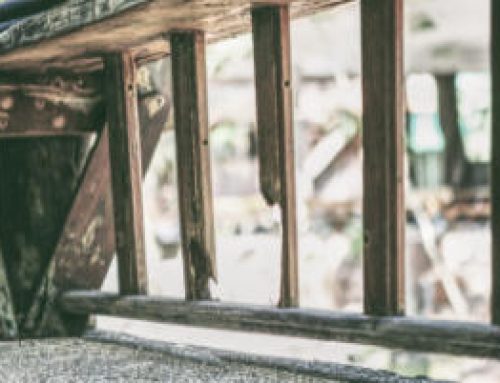Humidity and rain can be  devastating to wooden balconies, and can be frequent causes for balcony failures from water intrusion.
devastating to wooden balconies, and can be frequent causes for balcony failures from water intrusion.
Imagine enjoying your balcony, only to discover that parts of it are rotting away—even if it is relatively new. Or seeing your balcony separate from your house, causing unsafe conditions at the least. The worst case scenario is having your balcony collapse during use, a devastating event that can cause bodily injury or perhaps even death.
Northern Virginia is particularly prone to humid conditions; therefore, attention to construction practices needs to be diligent. Balconies are exposed to weather conditions 100% of the time.
A balcony is a self-supporting structure, as opposed to a deck that is supported by a foundation, and when constructed, must conform to current building codes, installation practices, and manufacturer installation instructions. In addition, materials and finishes must be appropriate for the conditions. Contractors who take shortcuts to save money on product quality or time in installation can often create construction defects that result in major problems down the road.
Water intrusion can happen in balcony areas including windows and doors, flooring, supports, posts and railings, flashings, and light fixtures. Since most of these penetrate a building’s exterior walls, they must be subject to the correct sequencing and installation. Otherwise, with repeated water intrusion, damage such as wood rot, deterioration and potentially mold and bacteria growth will occur. In addition, water infiltration may over time cause damage to the underlying framing and construction of a home.
You might spot balcony water damage in the following ways:
- Difficulty opening or closing windows or windows due to wood swelling
- Water leaks around doors and windows
- Water stains from leaks or pooling water
- Blistering or peeling paint
- Deteriorating wood or dry rot
- Rust around punctures such as nail holes
- Weakness or instability
- Fungus or mold
Ways to alleviate balcony water intrusion include:
- Floors, and potentially roofs, must slope away from the building to avoid pooling and absorption of water.
- Wood and other building components must be sealed to prevent water infiltration.
- Required by building codes, route any water away from the home in areas where the balcony attaches to the structure. This helps avoid damage to supporting structures.
- Wood finishes. All exterior-installed wood, such as that for trimwork, must be primed on all six sides, including the cut, trim ends. Sealing even the unseen surfaces will significantly reduce water absorption that can cause rot or mold growth. PVC or rot-resistant trims are also an option.
Structural damage caused by ongoing water intrusion take time to develop, however, their continued deterioration will eventually make the balcony or structure unsafe. Therefore it is best to catch any type of problem early, or prevent it in the first place with proper construction practices.
Först Consulting Group Inspects Balconies
If you notice any of the signs of water damage, or suspect a construction error, please contact Först Consulting Group. We can provide a structural inspection, full reports, and support you as an advocate or expert witness in the event of litigation or a construction dispute. Contact Först Consulting Group today.


